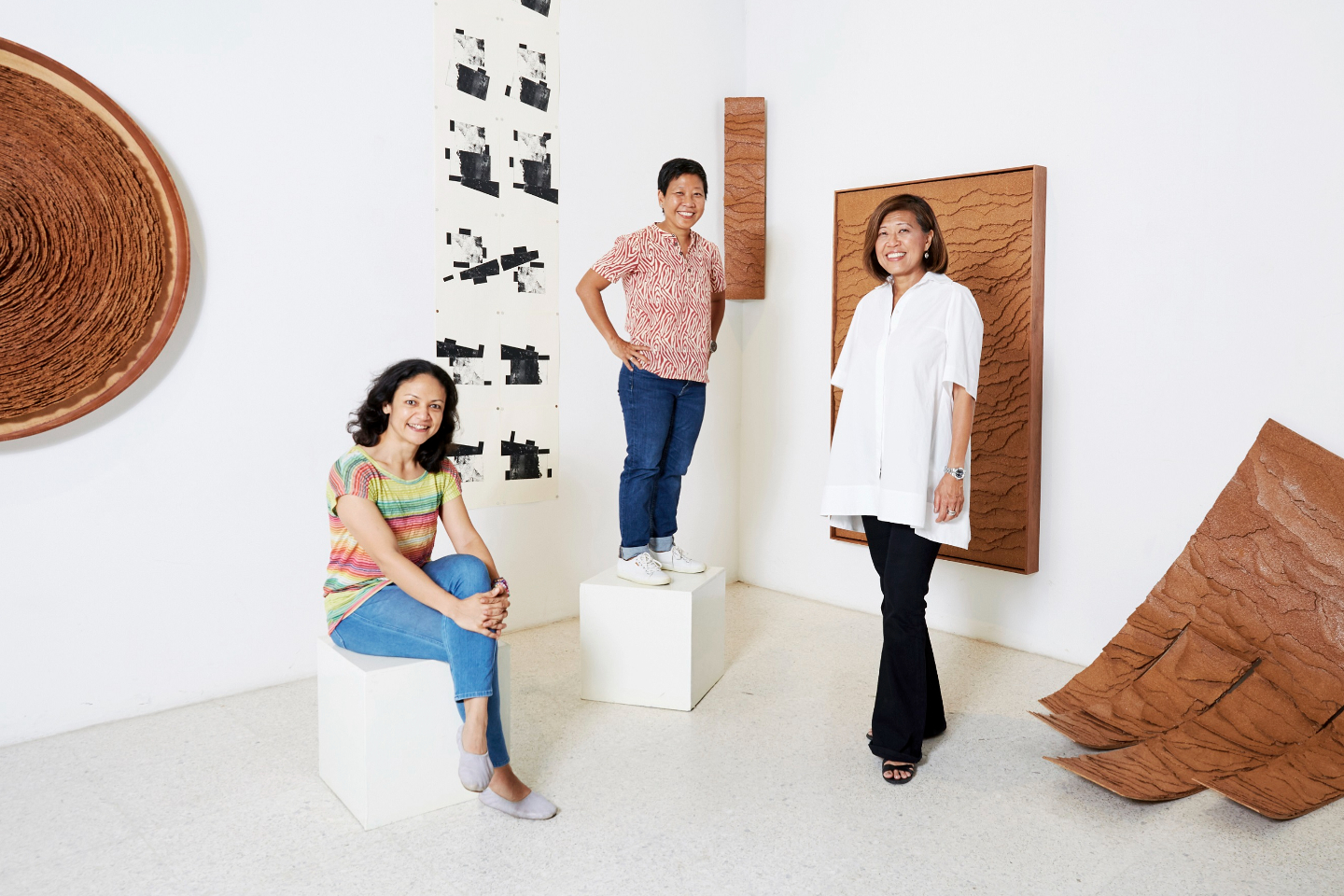
Creative collaboration (from left): Sharmin and Lina are curating events and exhibitions to fill the ‘neutral vessel’ Tay created after tearing down parts of an old bungalow (Photo: Soophye)
Most people build up to carve out more room on their property. Lillian Tay did the reverse. She tore down and removed parts of an old bungalow, a process of subtraction rather than addition to create space, the architect says.
Decluttering opened up the unit and transformed it into a “neutral vessel for events and works of art”. This “vessel” was named Temu House and eager beavers have been helping Tay fill it, starting last October: producer Lina Tan with curated events, and art curator Sharmin Parameswaran with exhibitions.
Temu House, located in a secluded Petaling Jaya suburb, invites interaction; its name in Malay means “to come together” or “meet”. Private and intimate, it is just the place to entice people to come out of the Covid-19 bubble and reconnect, Tan thinks.
Many entrepreneurs and groups of young people have started businesses online. “They will want places to meet and we want to reach out to them.”
The founder of production company Red Communications is the force behind 3R (Respect, Relax, Respond), a programme targeted at gender issues that ran on TV for 15 years. With women empowerment the gist of all the activities she organises, Tan envisions using Temu House for community gatherings, where minority or women’s groups can meet face to face.
She likes spaces and enjoys starting things up and making things happen. Temu offers a lovely venue with its serene neighbourhood, uncluttered layout, spacious garden, walls for art and a kitchen where chefs can come in and cater for events centred on food, to bring people together.
_s1a9753a.jpg
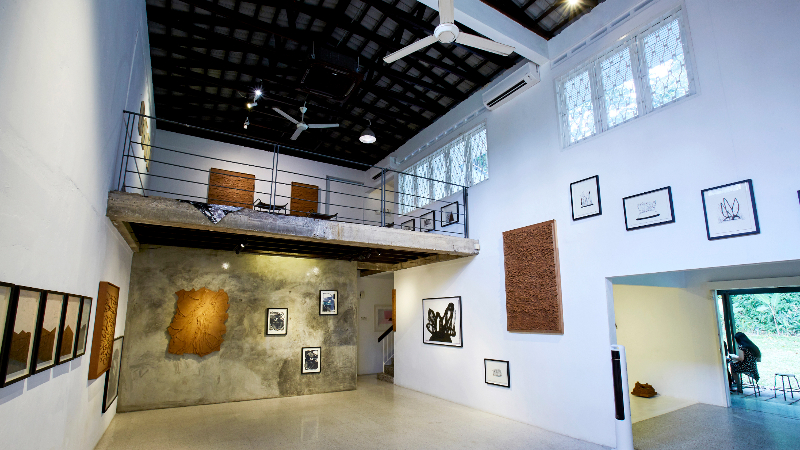
“This place was born during the pandemic, when I felt we needed to have meaningful conversations. If you don’t sit down and have that conversation, you can never know a person properly,” she says.
“But people are scared, right? They don’t want big places. So, when this place became available after the Print Room closed down, I thought why don’t I use it? The first time I walked in here — it was during the closing — I really felt something about it. I don’t know what it was, you just feel it. It was such a nice place but so rundown.”
Temu was a pandemic project, adds Tay of Veritas Design Group, picking up the thread of how it came to be. Her own house is next door to the property, originally a family home with four bedrooms.
“I bought this house from a neighbour, hoping my sister would live next to me one day and we’d grow old together. Unfortunately, she decided it wasn’t safe to live on the ground and ended up in an apartment in KLCC. This was about 15 years ago and it was left empty for a while.”
Eventually, she renovated the place and made it into a photo gallery because “I couldn’t bear to have someone buy it and tear it down, then build a big ugly house next to me”.
Tay took out half the bedrooms upstairs, which explains the high walls and ceiling, and opened up the house, built in the late 1960s. “I took out more than I put in.” The upstairs has a gallery area — it feels like a mezzanine, she adds — with room for a little office. The rest is the gallery proper.
When she got to know some photographers, she let them utilise the space for traditional black-and-white film photography. “I used to do that in university and thought perhaps I could go back to it, but that didn’t happen.” She built a darkroom and the photographers would print their pictures for exhibitions at the gallery. “It was low-key, a dying form of art that was the victim of digitalisation.”
Print Room ran the place for 10 years and when it decided not to continue, the house became empty again. “Then Lina said she wanted to do something here, so we cleaned up the space and she added the kitchen.”
_s1a9873a.jpg
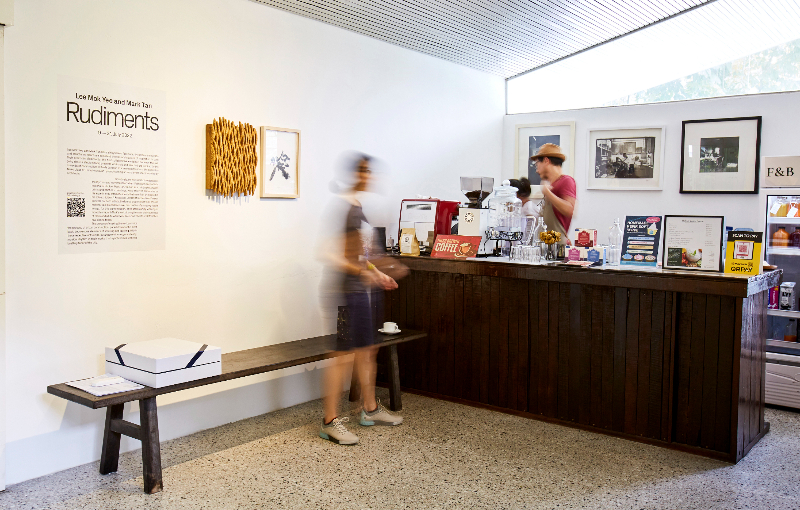
It was more than just a broom-and-mop job. Every time it rained, the garden was like a swimming pool, Tan recalls. “Lillian said, ‘You need to do subsoil.’ What’s that?
“I’m a producer. I didn’t know anything about subsoil but did not want to spend so much, so I learnt lah. She sent me her contractor, who taught me. We put in the drainage under the ground so that when it rains, it doesn’t become waterlogged, and replanted the grass.
“I came in and did all the conceptualising and clearing. I bought second-hand tables and chairs, put up the fans and air-con units, changed all the lights and repainted the whole building. We kept the garden open because all the trees were there but we planted a few things on the side. All during Covid. Nothing to do what. I had one person help me paint and we took our time.”
Covid-19 also gave her the idea to bring in people who had shuttered their restaurants in the last two years, to do speciality pop-up kitchens. She is looking at asking home cooks to come in, perhaps for evenings when there are private family events.
“I set up a proper working kitchen at the back so people can work there. I outfitted it with the bare minimum but made sure we got an industrial oven,” says Tan, who likes to sit on the verandah in the mornings and “think of things we can do. It’s very inspiring”.
Temu has seen groups coming in to hold theatre and music performances and workshops. Recently it hosted a dog party for 15 canine guests and 30 dog parents!
Its target for the pop-up kitchen is to get home cooks “very passionate about recipes they’ve had in the family for generations and want to share”, says Tay, whose sister is a chef and cookery teacher in San Francisco. “Maybe one day she will come and do this. She actually teaches Malaysian traditional cooking. We want to celebrate Melaka Peranakan food, normal fare, not fine dining, so everyone can relate to it.”
Food collaborations attract people, observes Tan, who tries to curate events to draw in even more. Temu is open only on Saturday and Sunday, and patrons need to call first. It is a private space and they hope to keep it so.
Weeks ago, she invited a friend who had returned from Hong Kong to do a pop-up kitchen. Wee Tee Teh and her chef husband William Ragonneau served burgers with portobello, beef brisket, pulled lamb and Vietnamese-inspired chicken.
“Wee Tee is one of my main collaborators. She’s very creative with meals and music. She is not from the industry and looks at the business of food differently.”
There have been other unusual culinary treats. At an Afghan refugee event, traditional fare was laid out. It was simple but delicious, Tay adds. Tan and Wee Tee curated an Orang Asli affair and took it outdoors, cooking with fire. An Indian neighbour had come in to bake bread. And there is always nasi lemak, prepared by Tan’s helper and wrapped with leaves from a banana tree in the garden that regenerates itself.
A drinks corner offers kombucha, coffee, tea, vege-based juices — its orange and beet root is popular — and for a sweet end to an afternoon, there is soft-serve kefir ice cream from Miss Kefir, founded in 2016. Flavours include blue pea flower and berry Bandung.
Temu’s menu is flexible and the aim is to promote young, emerging chefs, Tan says.
As for the art part, she has a partner in Sharmin, who takes care of the exhibitions. “She has been curating art in different places. Sharmin works on her own and has very interesting ideas of what art should be. I also like people doing things differently, not the traditional way.”
temu_tujoh.jpg
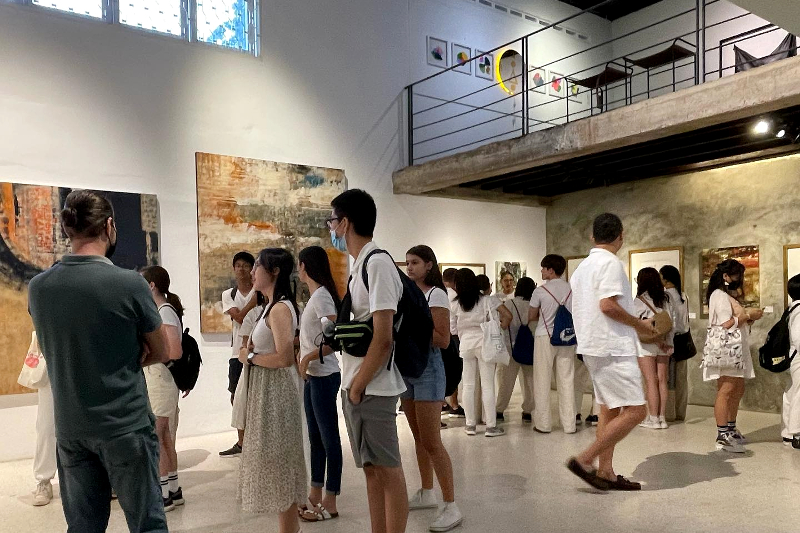
“How to make money? Temu House is parked under social enterprise 3R Media and any profit is reinvested in operations that promote empowerment for women, youth and marginalised communities. We just did a fundraiser for refuges — we supported them with the space.
“The commercial part is the private dining. To us, that’s important because individuals know what they are supporting. They come with their friends and talk about Temu and, through that, the money is rolled back.”
Mindful of noise because the house is in a residential enclave, they are careful about it being used for ‘loud’ events. Tay had met with the neighbours to tell them about the space and, when there are events, guests are advised to carpool — parking is a problem — or get a GrabCar if they are drinking.
“There’s a collaboration of people coming together here,” Tan says, beaming. “Temu House belongs to Lillian, and I got her to buy in on what I wanted to do. She said, ‘Take it,’ and has been a great supporter. I think all this is made possible only because she really wants to make it happen.
“Like so many nice places in Kuala Lumpur, it’s just about making that space and upkeeping it.”
The architect behind the venture shares her part of the story, pausing to credit the people responsible for running the 13,000 sq ft operation. “Without the content, it’s just a shell.”
Before starting work on Temu, which she named, Tay decided to retain how it looks: a typical, standard bungalow from the 1960s, with windows and sliding doors to keep the place cool. Doing a quick point-and-tell around the gallery floor, she puts the pieces together.
temu_house.jpg
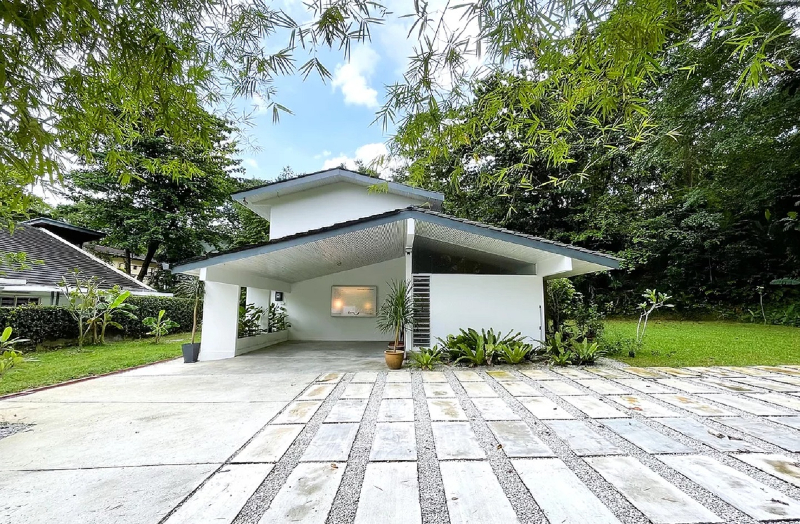
“The rails of the original doors are still here. I left them as marks of what was before. I created a new rail and took down a bedroom wall, so the space became bigger.”
She also removed a garage and walls to make a flexible, flowing space to accommodate art exhibits and small dining groups. Timber was salvaged and used to build a verandah that looks out to the garden.
“A lot of it was making the space work outdoors with the garden rather than closing up areas and having air-conditioning everywhere. But we added some units because some days it can get humid.”
Building the gallery involved making do with what was at hand. The project was small and not fancy but down her alley for this past president of Pertubuhan Akitek Malaysia, who has worked with Badan Warisan Malaysia on heritage buildings.
“Old building have a place and I try to [keep them as they are]. Old shells can be renewed and still be relevant and engaging for young people,” says Tay, who recently converted one such structure into a shelter for abused children and women for the Women’s Aid Organisation.
She hopes that, through similar projects, people will discover the beauty of old bungalows, which still dot the country. “Many tear them down and redo. We can do a lot to modify old skeletons for new use.
“I’m happy Lina and the others have given Temu life. They are very creative and have a do-good agenda. Also, I get to enjoy all the things they cook here.”
This article first appeared on Aug 22, 2022 in The Edge Malaysia.


